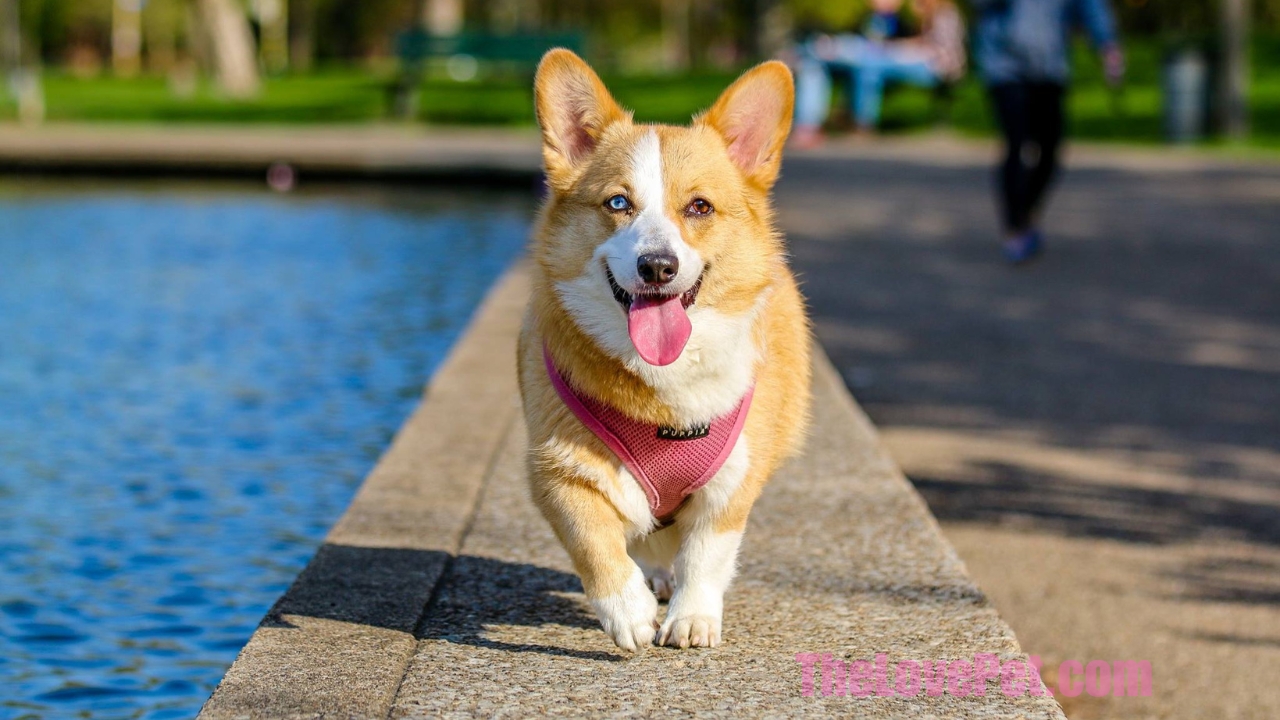#Update #New #RelatedInformation
“What exactly is pet insurance, and what are its mechanics?”
**Questions:**
1. What is pet insurance, and how does it work?
2. What are the key components of a pet insurance policy, such as deductibles and reimbursement levels?
3. What is typically not covered by pet insurance?
4. What factors affect the cost of pet insurance premiums?
5. How much does pet insurance typically cost, and what are the main cost components?
—
**Answers:**
**What is pet insurance, and how does it work?**
Pet insurance is a type of health care policy for your pet that provides reimbursement for certain medical expenses. It operates like a typical insurance policy, where you pay a monthly premium to an insurer. If your pet becomes sick or gets injured, you pay for their healthcare upfront and then submit a claim to the insurance company for reimbursement. Depending on your specific policy, you may have to cover a deductible and a percentage of the total bill. The primary purpose of pet insurance is to help manage the costs associated with major medical procedures or treatments that can be quite expensive. For instance, treatments like radiation therapy for cancer can cost thousands of dollars, and without insurance, such expenses can be financially burdensome.
**What are the key components of a pet insurance policy, such as deductibles and reimbursement levels?**
Most pet insurance policies consist of several key components. These include:
– **Deductible:** This is the amount you have to pay out of pocket before your insurance coverage kicks in. For example, if you have a $50 deductible and your pet incurs a $15,000 medical bill, you’d pay the entire bill plus the $50 deductible. The insurer would then reimburse you according to your policy terms.
– **Reimbursement Level:** Your policy will specify the percentage of costs that the insurance company will reimburse. For instance, a policy with a 100% reimbursement level means the insurer will cover the entire eligible cost after the deductible.
– **Annual Maximum:** This is the highest amount the insurance company will pay out within a year. For example, if your annual maximum is $10,000 and your pet’s medical bills for the year amount to $15,000, you’ll be responsible for the remaining $5,000.
**What is typically not covered by pet insurance?**
Pet insurance typically covers most accidents and illnesses, but there are exclusions to be aware of. Some common exclusions include preexisting conditions, which are ailments your pet had before you purchased the insurance. However, it’s worth noting that some companies, like Embrace, may cover curable preexisting conditions if your pet shows no signs or symptoms of the condition for 12 months after the date of onset.
**What factors affect the cost of pet insurance premiums?**
The cost of pet insurance premiums depends on various factors, including:
– **Your Pet:** The type, breed, age, and overall health of your pet can influence the cost. Older pets or breeds prone to certain health issues may have higher premiums.
– **Policy Coverage:** The extent of coverage you choose, such as deductible amount, reimbursement level, and annual maximum, will affect your premium.
– **Location:** The cost of veterinary care can vary by location, so where you live also impacts your premium.
**How much does pet insurance typically cost, and what are the main cost components?**
The cost of pet insurance can vary, but on average, accident and illness plans for dogs are around $49 per month, while cat insurance is somewhat cheaper at an average of $29 per month. Your monthly rate depends on factors like your chosen coverage, deductible, and where you live. It’s important to consider not only your monthly premium but also other cost components, including:
– **Deductible:** You may have an annual or per-incident deductible. This affects how much you pay before the insurance kicks in.
– **Copay or Reimbursement Rate:** This is the percentage of the vet bill you’re responsible for paying. For instance, a 10% copay means you pay 10% of the bill, and the insurer covers the rest.
– **Maximums, Limits, and Ceilings:** Your policy will specify the maximum amount the insurance company will pay out, which can vary by different criteria, such as time or specific medical conditions.
You can find the full post here
#Update #New #RelatedInformation
“What exactly is pet insurance, and how exactly does it operate?”
**Questions:**
1. What is pet insurance and how does it work?
2. What does pet insurance cover and what are the different types of pet insurance plans?
3. Where can you use pet insurance, and are there any restrictions on the choice of veterinarians?
4. What are the common exclusions in pet insurance coverage?
5. How does the cost of pet insurance vary, and what factors influence its pricing?
—
**Answers:**
**What is pet insurance and how does it work?**
Pet insurance is a health plan that pet owners pay for on a monthly or annual basis. In return, they receive reimbursement for eligible veterinary expenses. When your pet receives medical care for a covered condition, you pay the veterinarian upfront and then submit a claim to your insurance company. The reimbursement amount is determined by the terms of your policy, including deductibles, coverage limits, and reimbursement percentages.
**What does pet insurance cover and what are the different types of pet insurance plans?**
Pet insurance plans can vary, but they typically cover expenses related to accidents and illnesses. The coverage provided depends on the specific plan you choose. There are three main types of pet insurance plans: accident-only, accident and illness, and wellness coverage. The deductible, coverage limits, and other details can vary by insurer.
**Where can you use pet insurance, and are there any restrictions on the choice of veterinarians?**
Most pet insurance plans operate on a reimbursement basis, allowing you to use your coverage with any licensed veterinarian, specialist, or emergency clinic of your choice. Unlike human health insurance, pet insurance does not have provider networks. However, some companies may have specific requirements for veterinarian bills to be eligible for reimbursement.
**What are the common exclusions in pet insurance coverage?**
Pet insurance typically excludes coverage for pre-existing conditions, non-vet related costs, and regular pet care, unless you have purchased a routine or wellness plan. This means that everyday expenses like pet food, toys, vitamins, grooming, and boarding fees are not covered. Some carriers may cover prescription food or boarding fees under certain circumstances.
**How does the cost of pet insurance vary, and what factors influence its pricing?**
The cost of pet insurance can vary significantly. In 2021, the average monthly premiums for accident and illness policies were approximately $49 for dogs and $29 for cats. Several factors influence the cost of pet insurance, including your pet’s type, breed, age, and overall health, as well as the specific coverage options you choose. Additionally, where you live can impact the cost due to regional variations in veterinary care expenses.
You can find the full post here
#Update #New #RelatedInformation
“What Is Included in Pet Insurance Coverage?”
**Questions:**
1. What are the different types of pet insurance coverage, and how do they differ from each other?
2. What does pet insurance typically cover in terms of veterinary expenses?
3. What are some common exclusions in pet insurance coverage?
4. How do factors like coverage limits, deductibles, and reimbursement percentages impact the cost of pet insurance?
5. What are some frequently asked questions about pet insurance, such as coverage for spaying/neutering, dental care, vaccines, pre-existing conditions, surgery, and medication?
—
**Answers:**
**What are the different types of pet insurance coverage, and how do they differ from each other?**
There are three main types of pet insurance coverage:
– Accident and illness coverage: This type of plan is the most common and covers a wide range of accidents and illnesses that your pet may experience. It includes expenses related to accidents like car accidents and illnesses like urinary tract infections.
– Accident-only coverage: These plans are more limited and only cover injuries resulting from accidents. They do not cover illnesses such as cancer or infections.
– Wellness or preventive care coverage: This is typically an add-on to accident and illness plans and covers routine services like vaccinations, spaying/neutering, and teeth cleaning.
**What does pet insurance typically cover in terms of veterinary expenses?**
Pet insurance covers a range of veterinary expenses, including:
– Prescription medicine
– Surgery
– Diagnostic tests
– Hospitalization
– Emergency care
However, coverage can vary among plans. Some plans may also cover additional treatments and services, such as alternative therapies, behavioral therapies, congenital or hereditary conditions, exam fees, prescription diets and supplements, dental care, and even final expenses associated with end-of-life care.
**What are some common exclusions in pet insurance coverage?**
Pet insurance plans typically do not cover:
– Pre-existing conditions: Medical problems your pet had before purchasing the policy or during the waiting period.
– Cosmetic or elective surgeries: Procedures like declawing or tail docking unless deemed medically necessary.
– Routine and wellness care: Annual vaccinations, spaying/neutering, and teeth cleaning unless you have a wellness add-on.
– Breeding expenses: Costs related to breeding or pregnancy.
– Waiting periods: A waiting period before coverage begins, which varies for different conditions.
– Coverage limits and deductibles: Factors that impact how much you receive in claim payouts, including annual coverage limits, deductibles, and reimbursement percentages.
**How do factors like coverage limits, deductibles, and reimbursement percentages impact the cost of pet insurance?**
The cost of pet insurance depends on several factors, including:
– Coverage limits: The maximum amount your plan will reimburse you for veterinary expenses in a given year. Plans with higher limits may cost more.
– Deductibles: The amount you need to pay before becoming eligible for reimbursement. Plans with lower deductibles may have higher premiums.
– Reimbursement percentages: The percentage of your veterinary expenses that the insurance company will cover after you’ve met your deductible. Plans with higher reimbursement percentages may have higher premiums.
Customizing these factors can help you adjust your premium and the maximum amount you can recover.
**What are some frequently asked questions about pet insurance, such as coverage for spaying/neutering, dental care, vaccines, pre-existing conditions, surgery, and medication?**
– Spaying/Neutering: Generally not covered unless you purchase extra wellness and preventive care coverage.
– Dental Care: Coverage depends on the plan and type of care. Accidental injuries to teeth may be covered, but routine dental cleanings are typically part of wellness coverage.
– Vaccines: Routine expenses like vaccinations are usually not covered unless included in a wellness add-on.
– Pre-existing Conditions: Almost never covered. Some exceptions may exist for “curable” conditions that have been symptom-free for a specific period before policy purchase.
– Surgery: Most medically necessary surgeries are covered unless for a pre-existing condition or other excluded issue.
– Medication: Typically covered if prescribed by your vet for a covered accident or illness.
You can find the full post here
#Update #New #RelatedInformation
Top Pet Insurance Companies in August 2023
As a user searching for information on the Internet, here are five questions that the article can answer:
1. What are the best pet insurance companies as of August 2023?
2. What factors should I consider when choosing a pet insurance plan?
3. What does pet insurance typically cover?
4. What are the common exclusions in pet insurance policies?
5. How does pet health insurance work?
Now, assuming I am the author of the article, I will provide detailed answers to these questions:
1. The best pet insurance companies as of August 2023, based on our evaluation, include:
– Paw Protect, known for its instant payment of covered vet bills and a $2,000 line of credit for policyholders.
– Embrace, which offers comprehensive coverage benefits, including vet exam fees and access to a 24/7 pet health line.
– Spot, which provides various annual coverage choices and deductible options.
– ManyPets, offering unique features like reducing the waiting period to 24 hours if switching from another insurer.
– Pumpkin, known for its coverage options and no extended waiting period for certain conditions.
– Figo, with a variety of coverage, reimbursement, and deductible options.
– Lemonade, offering competitive rates, especially for puppies and kittens.
– Pets Best, combining great coverage with a range of deductible choices.
– Trupanion, known for unlimited annual coverage, no deductible, and flexible reimbursement options.
2. When choosing a pet insurance plan, consider the following factors:
– Plan Type: Decide between comprehensive plans, accident-only plans, or plans in between.
– Coverage Level: Select an annual maximum, deductible, and reimbursement level that suits your needs.
– Waiting Periods: Understand waiting periods, which vary for different conditions.
– Discounts: Look for available discounts to save on your premium.
– Additional Factors: Consider your pet’s age, breed, gender, and location as they can affect costs and coverage.
3. Pet insurance typically covers a range of medical expenses, including:
– Accident and Illness Plans: Cover injuries, sickness, hereditary conditions, and more.
– Accident-Only Plans: Cover injuries resulting from accidents.
– Wellness Add-Ons: Offset routine care costs like vaccinations and check-ups.
– Note that pre-existing conditions are usually not covered.
4. Common exclusions in pet insurance policies may include:
– Grooming and breeding costs.
– Certain pre-existing conditions.
– Expenses unrelated to veterinary care, like taxes or administrative fees.
– Failure to follow recommended care from your vet.
5. Pet health insurance works by reimbursing you for covered veterinary expenses. Here’s how it typically works:
– Pay a deductible amount before coverage starts.
– Pay your vet directly and submit bills to the insurance company.
– The insurer reimburses you based on your chosen reimbursement percentage until reaching the maximum annual coverage limit.
You can find the full post here
#Update #New #RelatedInformation
“How Pet Insurance Operates: Your Comprehensive Handbook | Lemonade”
**User’s Questions:**
1. What is pet health insurance and why do I need it?
2. What does pet health insurance cover?
3. How can I customize a pet health insurance policy?
4. How much does pet health insurance cost?
5. How do pet insurance claims work with my vet?
**Author’s Responses:**
1. **What is pet health insurance and why do I need it?**
Pet health insurance is a policy that covers the costs of veterinary care for your pet, including diagnostics, treatments, surgeries, and medications for accidents and illnesses. It’s essential because it can help you afford unexpected and expensive vet bills, ensuring your pet gets the care they need without causing a financial burden. If your pet faces an accident or illness, your insurance will reimburse you for a portion of the veterinary expenses, making it easier to provide timely care for your beloved pet.
2. **What does pet health insurance cover?**
Pet health insurance typically covers the costs of diagnostics, such as x-rays or blood tests, as well as treatments, like surgeries or medications, for accidents and illnesses. However, coverage may vary among insurance companies, so it’s crucial to review policy details. Some insurance providers offer accident-only plans, while others have comprehensive coverage that includes preventive care like vaccinations. Be sure to consider your pet’s specific needs and choose coverage accordingly. It’s also essential to be aware of any exclusions in your policy.
3. **How can I customize a pet health insurance policy?**
You can customize your pet health insurance policy based on your pet’s needs and your budget. Different insurance companies offer various options for coverage. For example, with Lemonade, you can customize your policy by adding coverage for vet visit fees, physical therapy, dental illness, behavioral conditions, and end-of-life and remembrance. Lemonade also offers preventative care packages, including options for wellness exams, blood tests, vaccines, and more. These customization choices allow you to build a policy that suits you and your pet’s requirements.
4. **How much does pet health insurance cost?**
The cost of pet health insurance varies depending on several factors. A basic Lemonade pet health insurance policy starts at $10 per month for both cats and dogs. However, the monthly premium can be influenced by factors such as your pet’s age, breed, and where you live. Generally, dog insurance tends to be more expensive than cat insurance, and certain breeds may have higher premiums. You can adjust your co-insurance, deductible, and annual limits to customize your coverage and manage your monthly premium. Keep in mind that lower premiums might result in less coverage for expensive vet bills.
5. **How do pet insurance claims work with my vet?**
Pet insurance claims with Lemonade work on a reimbursement basis. You can visit any licensed vet in the U.S. for your pet’s care. After paying the vet bill upfront, you need to submit the receipts to Lemonade for reimbursement. Lemonade’s claims team will review your claim to ensure it’s covered under your policy and then reimburse you for the eligible amount. This process allows you the flexibility to choose the vet you prefer while still receiving insurance benefits.
You can find the full post here









